Read The
Current Issue
Photo Gallery: Lessons in the Wild
Thirty-one years after wildfires burned about one-third of Yellowstone National Park, the recovering landscape is a classroom for scientists, and for park visitors who know what to look for.
By Kylie Mohr // Photography by Bradly J. Boner
THE SUMMER OF 1988 in the Greater Yellowstone Ecosystem was very dry. By September of that year, forty-two lightning-caused fires had burned approximately 1.2 million acres of lodgepole pine forest—a swath the size of Rhode Island—impacting roughly 36 percent of Yellowstone National Park.
But fire is a paradox—destructive and regenerative at the same time. Today, the scars on the landscape from the 1988 Yellowstone fires are still visible, but also visible is the fact that the landscape (and the wildlife that lives in it) is recovering. A team of scientists, including University of Wyoming zoology professor Scott Seville, University of Oklahoma biology professor Hayley Lanier, and Laramie County Community College biology professor Zac Roehrs, has been researching how plants, small mammals and insects recover. “We’ve got data from the same sites back to 1989,” Lanier says.
After the last embers of a wildfire are snuffed out, some species bounce back quickly and others need more time. Deer mice do really well initially. Canadian thistle, a noxious weed, can sprout only a month after a fire. Red-backed voles only begin to appear again after fungi and shrubs have grown back. It is usually several years after a fire before forbs, grasses, and seedlings of aspen, pine, and spruce make their first appearances. “It’s so easy to think of everything [after a fire] as being set back to zero,” says Roehrs. “It’s not like that at all. It’s a very dynamic process.”
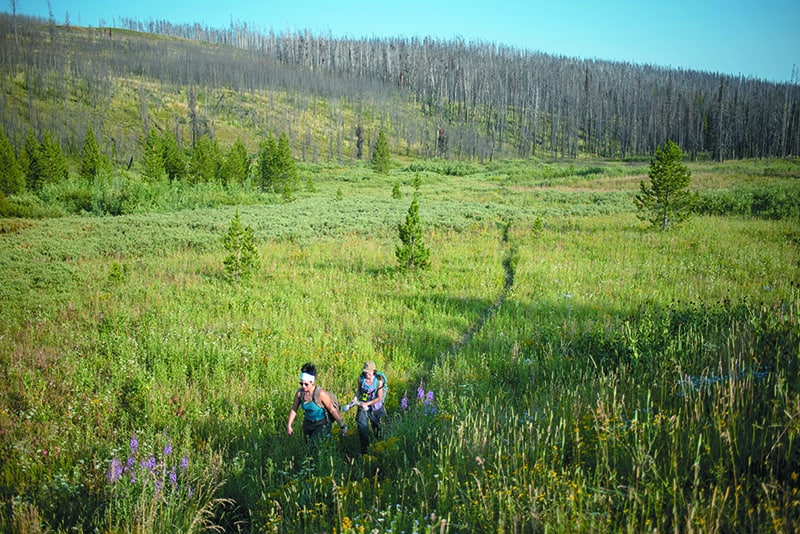
Rocky Mountain lodgepole pines are adapted to fire with both ordinary cones that open seasonally and serotinous cones, which need heat, often from fires but sometimes strong, direct sunlight works, to open. Individual pine trees will have predominantly one type of cone or the other, and such variation will exist in a single stand of trees. Once a fire or harsh sunlight has melted a serotinous cone’s waxy exterior, seeds disperse to germinate. Other trees with these heat-loving cones include the Jack and Table Mountain pine trees.
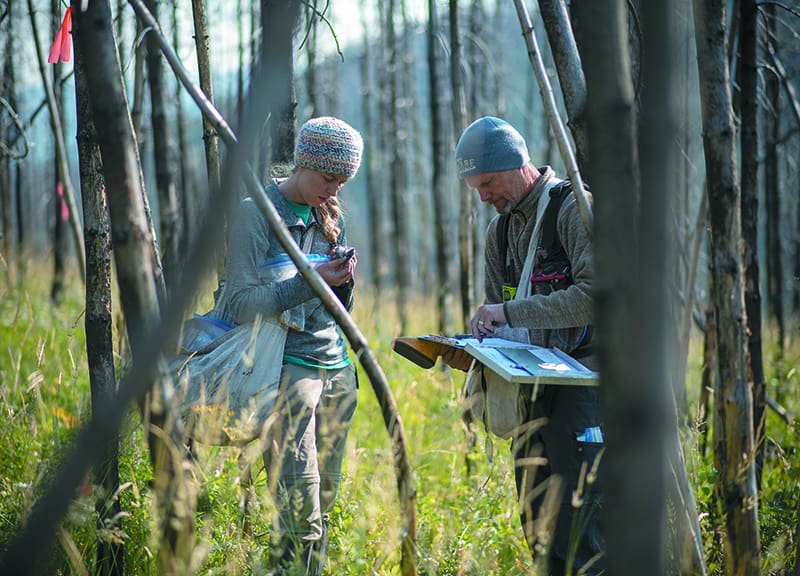
Seville, a zoology and physiology professor who specializes in parasitology, taxonomy, and evolution, joined the study almost 30 years ago. After working at the Triangle X Ranch as a river guide and in a fall hunting camp prior to starting graduate school, Seville says he “never could pass on a chance to get back to the Greater Yellowstone Ecosystem.”
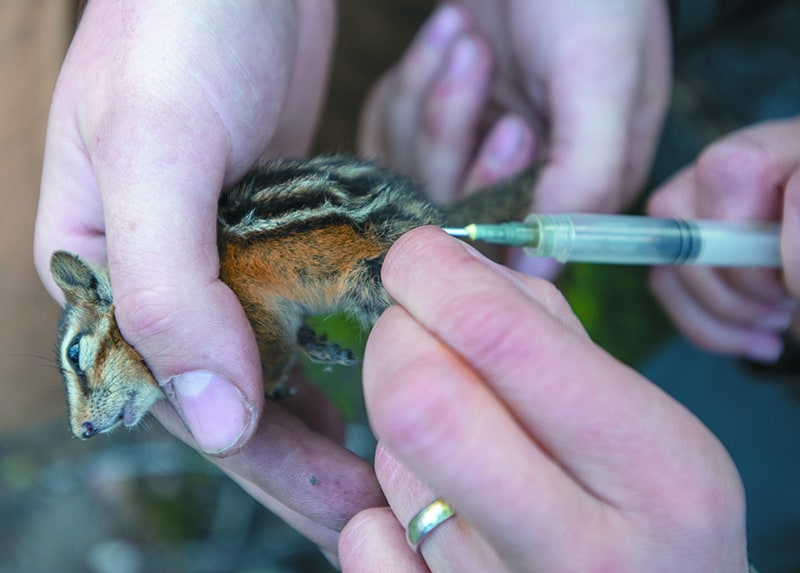
The rate at which small mammals like deer mice are recaptured helps scientists model population size. They can even see how they move around the landscape by dusting the mice with fluorescent powder and following their trails with black light. Researchers are interested in deer mice because they’re often the first small mammals to return to a burned area.
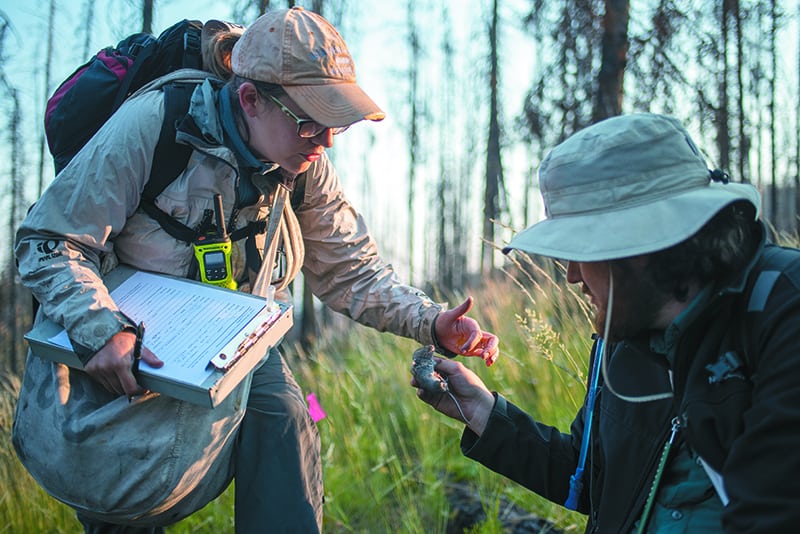
Numerous projects studying everything from soil chemistry to invertebrates were initiated after the 1988 fires. Researchers on this particular study, which evolved over the years to focus on small mammals and plants, test plots three weeks every summer. They observe changes in vegetation and live-trap small mammals and invertebrates so that they can record everything from skull size to diet and genetic information.
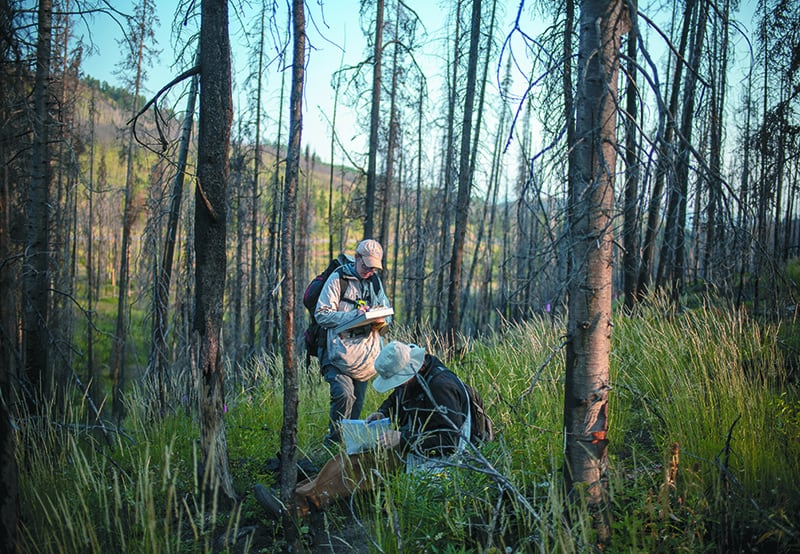
When a forest burns, snags first remain upright but, over time, fall down. When they fall, they become woody debris, adding structure to the forest floor and providing cover for small mammals and ground-feeding birds like voles, shrews, and grouse. Large animals also like the cover for resting—scientists see elk bed down and hide
in downed timber.

Researchers call deer mice, catalogued here, “colonizers” because they quickly take hold again after a fire sweeps through. Other species are more specific in their habitat requirements. The mice are found throughout North America, from alpine habitats to the desert.

A longitudinal study with scientists coming in and out over decades isn’t an easy feat to organize. Students from Laramie County Community College, University of Wyoming’s Casper and Laramie campuses, Casper College, and even the University of Oklahoma have helped researchers in Yellowstone like Jordan Ness, pictured here.




